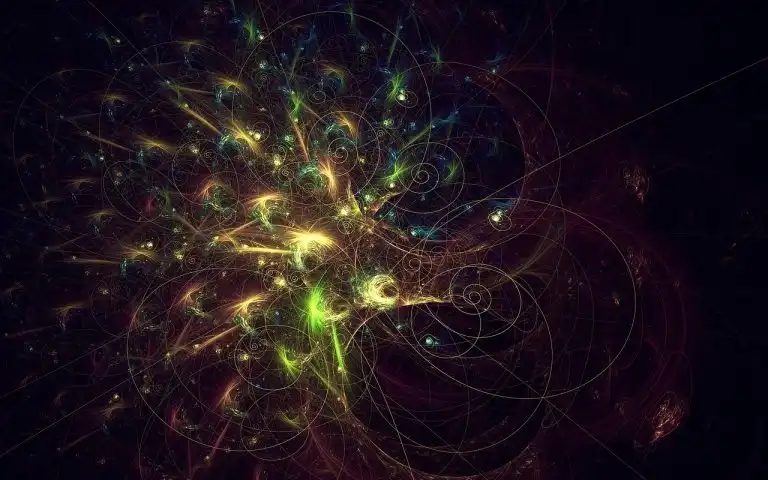
Chaos magic is a modern and highly individualistic form of magic that focuses on achieving results rather than adhering to any specific tradition or set of beliefs. Its core concepts include the power of belief, simplicity in form, and the idea that reality is malleable and can be shaped through intention and willpower. Chaos magic's origins can be traced back to the 1970s, and it has evolved and diversified throughout the years. The influence of chaos magic can be seen in various aspects of popular culture.

Chaos magic is a relatively new form of magic that has its roots in the late 20th century. It is a modern practice that draws inspiration from a range of spiritual and occult traditions, including shamanism, Hermeticism, and Eastern mysticism.
What sets chaos magic apart from other forms is its unique focus on achieving results, unbound by any specific tradition or set of beliefs. Chaos magic practitioners are the architects of their own rituals and spells, drawing inspiration from a myriad of sources to manifest their desired outcomes. This aspect of chaos magic fosters a sense of freedom and creativity, making it a highly individualistic and personalised form of magic.
Another defining aspect of chaos magic is its unwavering belief in the power of belief itself. Chaos magicians hold that the strength of their belief is a pivotal factor in the success of their magical workings. They often employ techniques like meditation, trance work, and visualisation to enter altered states of consciousness, harnessing these states to enhance their magical abilities. This emphasis on belief instils a sense of empowerment.
Compared to many other practices, chaos magic is relatively new. Its roots can be traced back to the 1970s when a group of occultists began to question the traditional dogmas and structures of the magical practices of the time. They were influenced by the works of Aleister Crowley and Austin Osman Spare, among others, and sought to develop a more flexible, experimental system suited to the modern mindset.
One of the key figures in the early development of chaos magic was Peter J. Carroll. He was a British occultist who co-founded the Illuminates of Thanateros (IOT) in the late 1970s. The IOT, a magical order, played a significant role in developing and spreading chaos magic. Carroll laid the foundations for chaos magic in his book Liber Null & Psychonaut, which was influenced by the practices and beliefs of the IOT. In it, he introduced concepts such as sigil magic and gnosis, which are now integral to chaos magic.
About ten years later, chaos magic began to gain momentum. In the 1980s, authors like Phil Hine, Robert Anton Wilson, and Lionel Snell started publishing books about the subject. These writers expanded upon the principles laid out by Carroll, emphasising the importance of psychological techniques, improvisation, and a ‘pick and mix’ approach to magical theory and practice. The ‘pick and mix’ approach involves selecting and combining elements from various magical traditions and practices, allowing practitioners to create a unique and personalised magical system.
Throughout the 1990s and into the 21st century, chaos magic evolved and diversified. It found a strong foothold in the online occult community, a virtual space where practitioners from around the world shared ideas, techniques, and experiences. This online community played a significant role in the evolution and spread of chaos magic, allowing for the rapid exchange of information and the development of new practices. The influence of chaos magic could also be seen in various aspects of popular culture, from Grant Morrison’s writings to the aesthetics of industrial music and cyberpunk literature.
Today, chaos magic attracts practitioners from diverse backgrounds and disciplines. Its emphasis on experimentation, personal exploration, and the deconstruction of belief systems resonates with those seeking a practical and adaptable approach to magic in the modern world. Although its history may be relatively short compared to other magical traditions, chaos magic’s impact and influence are undeniable. It has shaped how many people conceive of and practice magic in the 21st century.

Chaos magic stands out with its unique core concepts. These include the potent force of belief, the elegance of simplicity in form, and the intriguing notion that reality is not fixed but can be moulded through intention and willpower. Unlike other magical practices, chaos magic encourages practitioners to forge their own path. This involves experimenting with diverse techniques and crafting personalized rituals and spells, all in pursuit of their desired outcomes.
In chaos magic, the power of belief is not just a matter of positive thinking, but a transformative force. Chaos magicians believe that their beliefs and intentions can shape reality and manifest their desires. This means that if a magician truly believes in the effectiveness of a spell or ritual, it is more likely to be successful. It’s a belief that holds the potential for profound change and transformation.
In chaos magic, the power of belief is not confined to a rigid set of beliefs or dogma. Instead, the practitioner is empowered to explore and discover what resonates with them. This can entail drawing inspiration from various sources, devising unique rituals, and even evolving their beliefs. The key is to cultivate a resolute and unshakable belief in the efficacy of their actions, which can then influence the outcome of their magical endeavors.
Chaos magic, with its emphasis on simplicity in form, offers a flexible and adaptable approach. Unlike other forms of magic that rely on elaborate rituals and complex symbolism, chaos magic encourages the use of simple, straightforward techniques. This approach allows you to focus more on the intention behind your actions, giving you the freedom to adapt to changing circumstances or personal preferences. It’s a practice that puts you in control, empowering you to shape your own magical journey.
Using simple forms also allows chaos magicians to create their own symbols and sigils. Sigils are powerful tools that represent a condensed form of the practitioner’s intention. By creating a unique sigil that encapsulates their desire, the practitioner can focus their willpower and intention to achieve the desired result. This simplicity i n form is a practical and effective way to harness the power of belief and intention to achieve magical results.

Chaos magic, a practice that respects and values individuality, encourages practitioners to chart their own course. It prioritizes personal exploration and experimentation over rigid adherence to rules or dogma. Central to its principles are the use of sigils and the profound significance of personal belief. Moreover, it champions the idea that reality is not fixed, but rather, malleable and can be shaped through the power of intention and will.
If you’re intrigued by the possibilities of chaos magic, approach it with an open mind and a spirit of experimentation. Remember, there’s no ‘right’ or ‘wrong’ way to engage with this practice. The key is to discover what resonates with you. By embracing chaos magic and harnessing the power of your own will, you open yourself to the potential for profound personal growth, heightened creativity, and a deeper understanding of your spiritual journey.